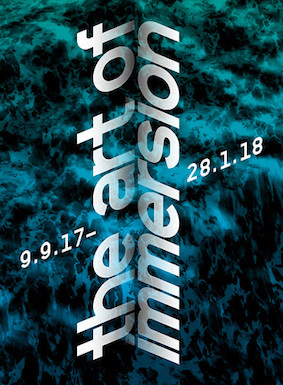


08 September 2017 - 28 January 2018
With:
Jean Michel Bruyère / LFKs — La Dispersion du Fils
Granular-Synthesis — <360> new version in 3D
Ulf Langheinrich — ALLUVIUM
all the three for the Jeffrey Shaw's AVIE-Advanced Visualisation and Interaction Environment.
Curators: Peter Weibel, Richard Castelli, Dennis Del Favero
IN FACT
In fact, everything started with immersion. Animals would never have been able to survive without the ability to perceive their surroundings in their entirety (for some people, to create them).
While morphological change has narrowed predators' field of vision, this has also brought them the benefit of better spatial perception – thanks to which they are able to judge distances, making them better hunters.
Art has developed along the same path: starting from the immersive environment of the prehistoric cave, and proceeding through the window principle that is found in frescoes and in paintings that can be more easily transported by their rich owners, to arrive at photography, cinema and television, the last of which is based on the brain's unique ability to process images which are much smaller than the work.
Panorama and dome painting, however, have outlasted all of these developments, although they require special architecture.
There are many forms of immersion: visual, acoustic and audiovisual. The exhibition The Art of Immersion at the ZKM | Karlsruhe focuses on immersion in the form of panoramic images that are expanded through the new dimension of stereoscopy, a process that is able to generate 3D animated panoramic images – thanks to the AVIE architecture developed by Jeffrey Shaw and the iCinema Centre in Sydney.
Some of the works presented are films that have been created specifically for this medium, including Ulf Langheinrich's ALLUVIUM, Jeffrey Shaw's The Infinite Line, an immersive project by Granular-Synthesis (Kurt Hentschläger and Ulf Langheinrich) that is entitled <360> and was originally conceived for 15 screens and has been adapted for 3D, and La Dispersion du Fils by Jean Michel Bruyère / LKFs, a generative work that creates a constantly changing space in real time and is made up of 22,000 fragments from more than 600 films related to the Greek tragedy of Actaeon.
© Richard Castelli
Co-curator
